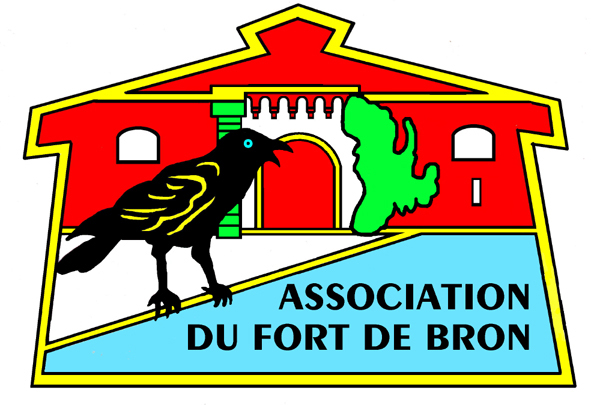The Fort of Bron (in French “Fort de Bron”), built between 1875 and 1877, is a polygonal military structure. The entrance porch, the ditches surrounding the fort, the double and single caponiers, the bakery, disciplinary cells and the grand staircase are emblematic features of the Fort. The various buildings could accommodate 841 men in the event of war.
The dormant bridge
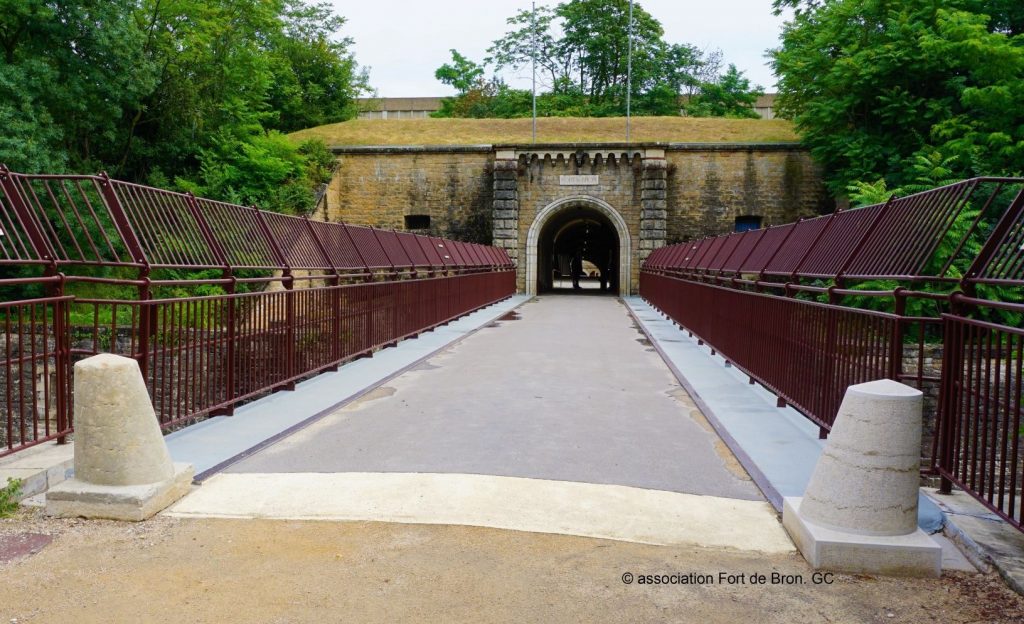
The only entrance to the Fort is to the west of the building, facing Lyon. The entrance is thus placed on the side opposite to the risk of attack by an assault force coming from the Eastern plain of Lyon. A curved pathway avoids direct access to the entrance. However, thanks to its relatively low vertical drop, this path has the advantage of allowing the movement of heavy loads.
A bridge spans the dry ditches that surround the Fort. It allows access to the Fort gate.
The ravelin
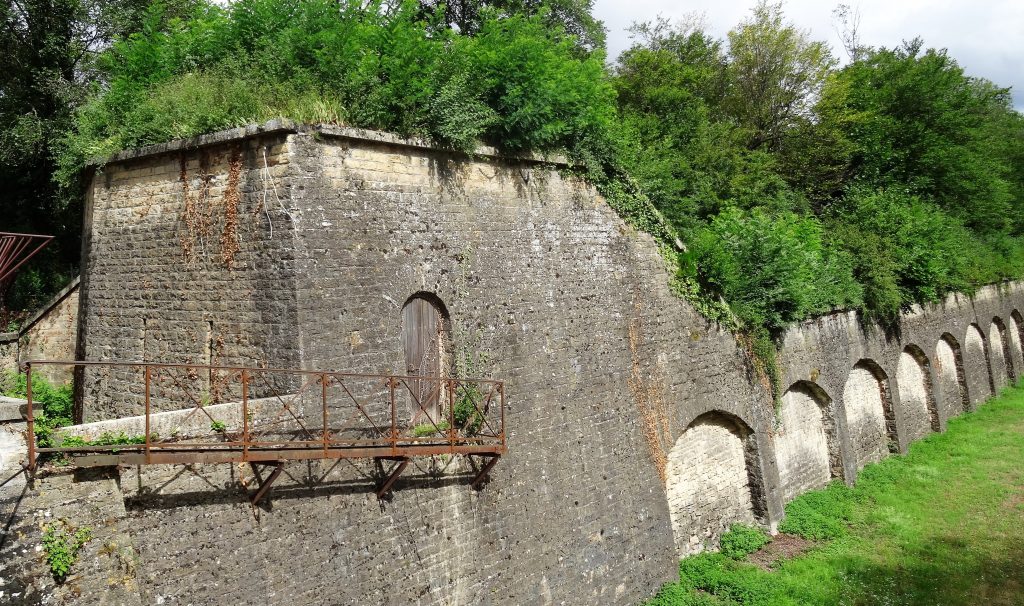
The ravelin is a guardhouse located opposite the curved path leading to the Fort. It is placed before the bridge and pierced with musket ports. Its role is to prevent direct fire on the entrance. It was accessed by a metal footbridge. The counterscarp wall is visible to the right of the photo with its arched design.
Ditches
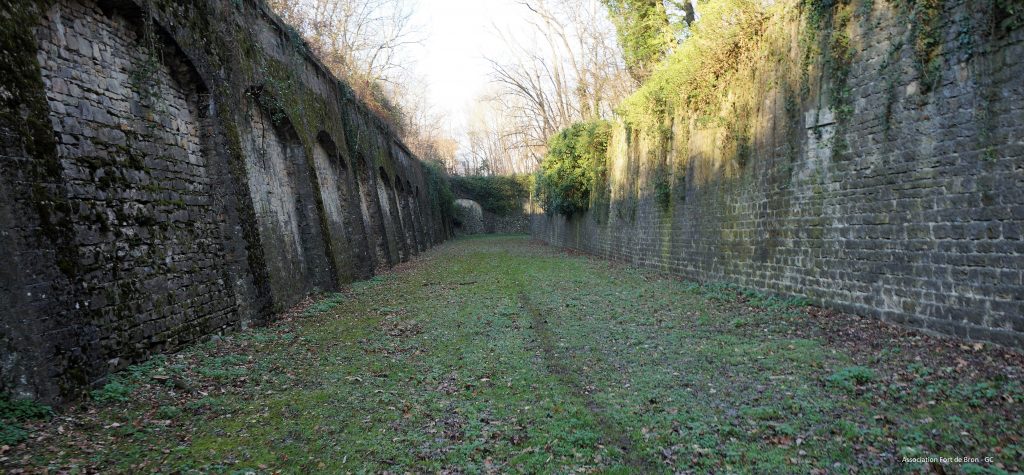
Dry ditches 7 meters deep and 10 to 13 meters wide surround the Fort over 1,600 meters. The scarp (inner side of the ditch) and counterscarp (outer side of the ditch) walls are in masonry. The rampart walk along the scarp wall is pierced with musket ports. The earth removed from the ditches during the construction of the Fort served in part to cover the interior buildings.
Entrance to the Fort
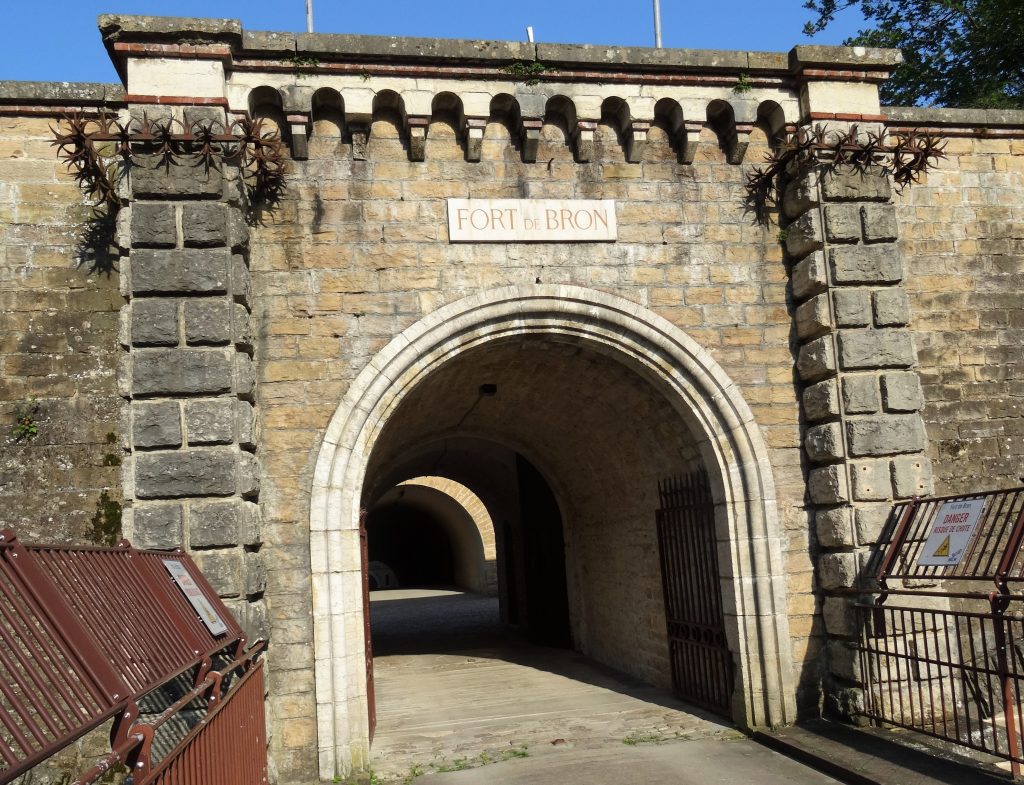
Two large pillars fitted with bossage frame the porch. Stones cut in rolls underline the arch of the porch. A gate and a heavy riveted iron door successively close the entrance.
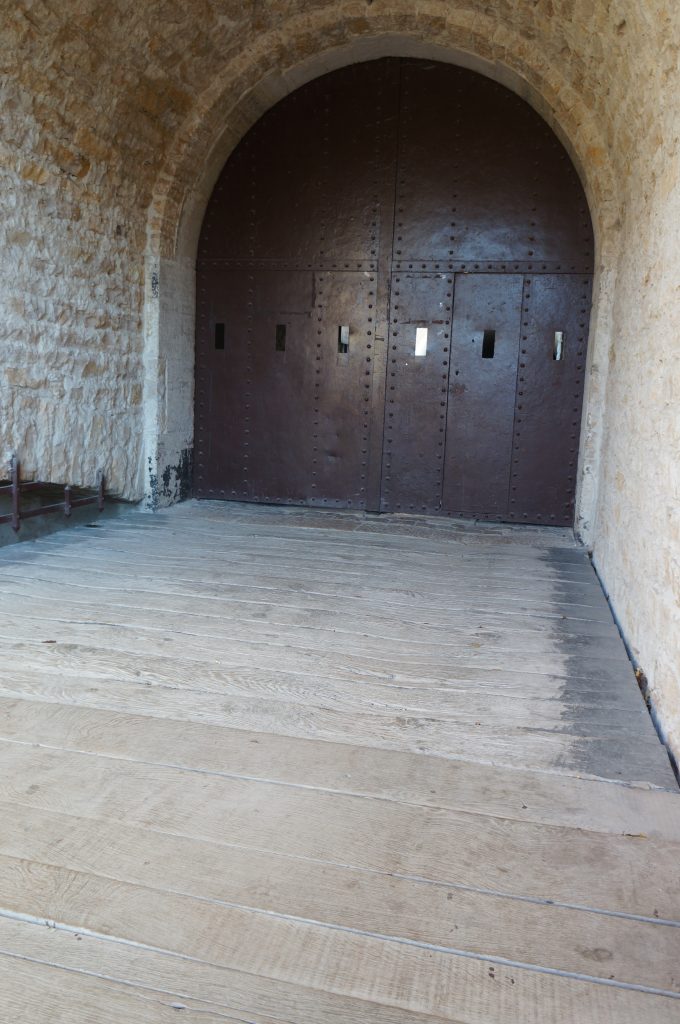
Behind the gate a drawbridge with a metal frame and a wooden deck, when moved perpendicularly to the axis of passage, would leave a void of several meters under the porch. Using a mechanism, two soldiers could pull the floor of the bridge over steel rollers inside a room to the left of the entrance.
Disciplinary cells
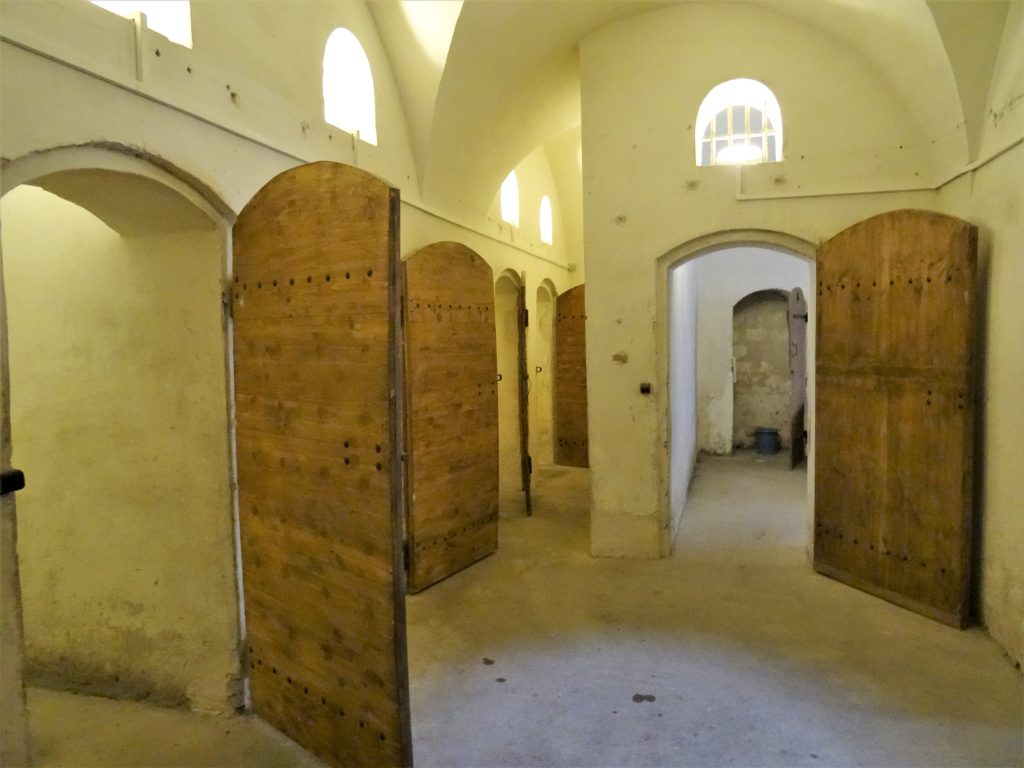
The disciplinary or punishment rooms for violations of military regulations were made up of individual or collective cells. The lighting for the cells came from a skylight located in the center of the entrance hall. No heating was provided in the cells. At the back of the cells, the punished soldier had a type of cupboard with a chamber pot.
The Fort de Bron bakery
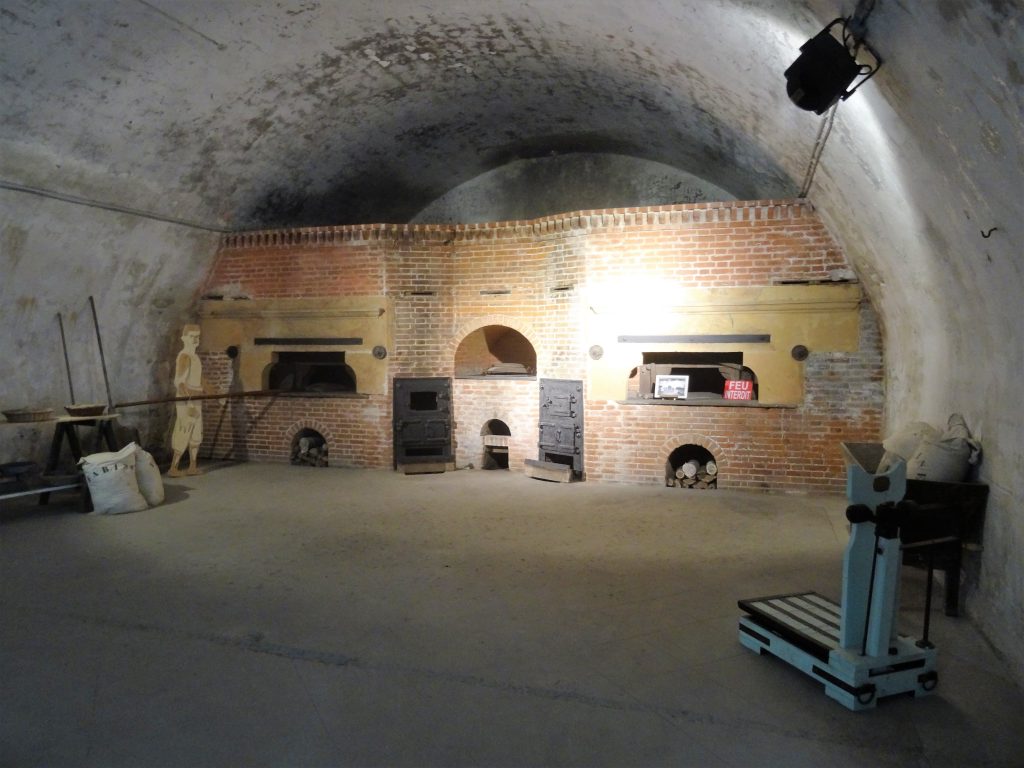
The bread ovens are Lamoureux furnaces called « air heaters » with independent hearths. They are equipped with a central hot water kettle to humidify the air, a very useful process for baking bread.
The ovens provided bread for the soldiers of the Fort and the neighboring batteries, i.e. 600 loaves of 1.5 kg each. A soldier’s daily ration was equal to 750 g (half a loaf).
The double caponier
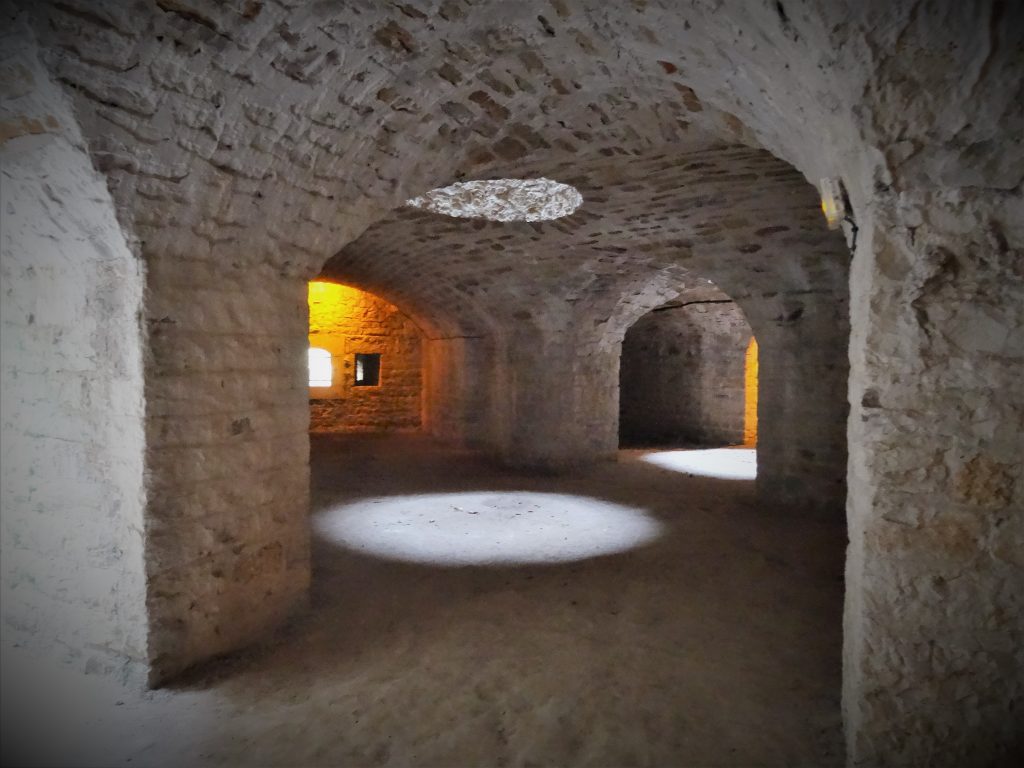
The caponiers are covered defensive structures located in the corners of the ditch. The Fort de Bron has two single caponiers and one double caponier. To prevent crossing of the ditch, they were armed with cannons that could fire into the ditch without destroying the scarp and counterscarp walls.
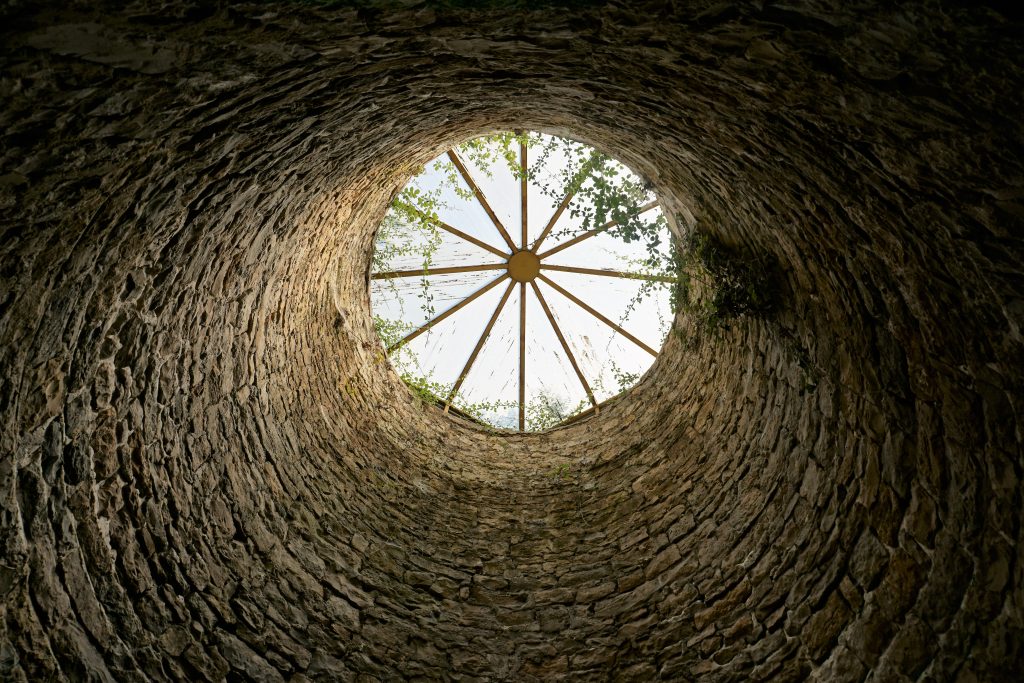
The double caponier certainly has the largest skylight of all the existing forts with its 4.10 meters in diameter.
Housing casemates
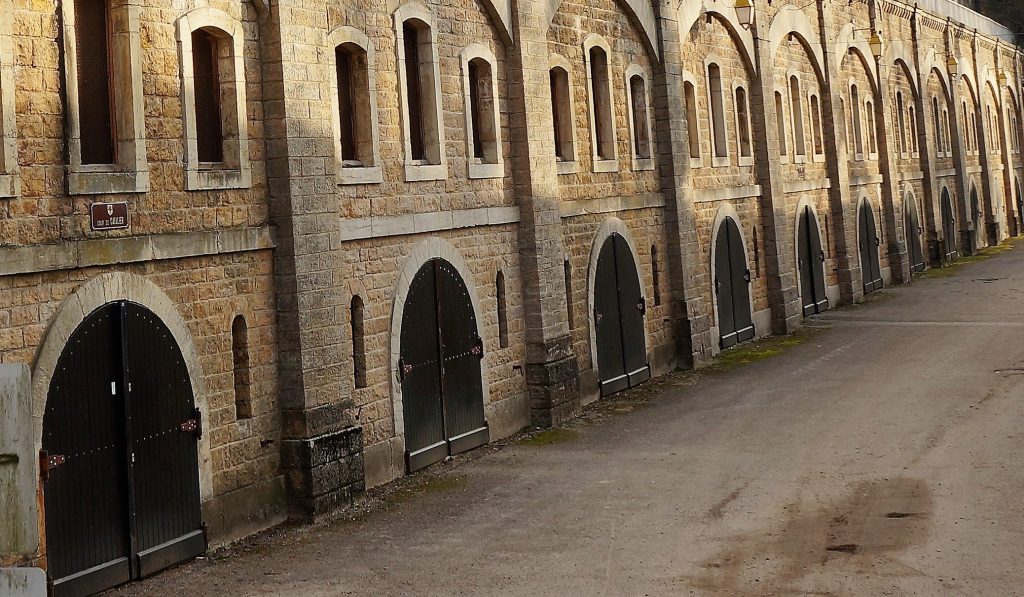
Housing for soldiers and various services at Fort de Bron were made of juxtaposed casemates, built according to the same principle.
The well and its pump
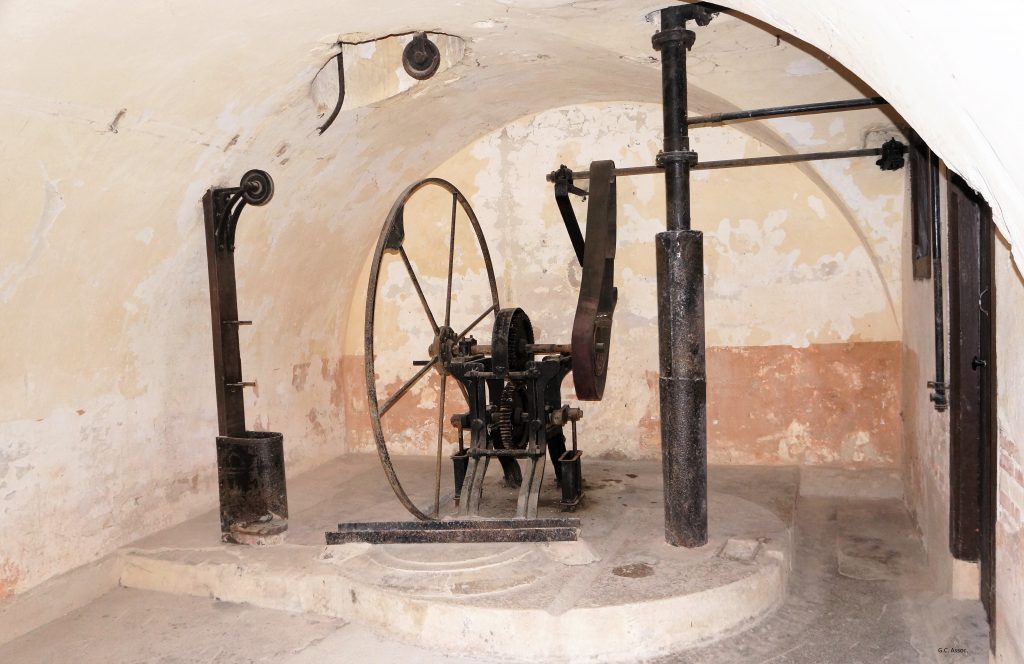
The well and its pump: The 37.30 meter deep well had a flow rate of 43.2 m3 per day. Soldiers operated its 2-wheeled hand pump. It ensured a volume of water useful for the use of the garrison, namely: 5 liters per man per day and 35 liters for horses. In the event of mobilization, the Fort would have required 4,500 liters per day. Together with the adjacent 25 m3 reservoir, the well insured the Fort’s drinking water autonomy. During German occupation of the Fort during World War II, an electric motor was added to drive the pump.
The Forge
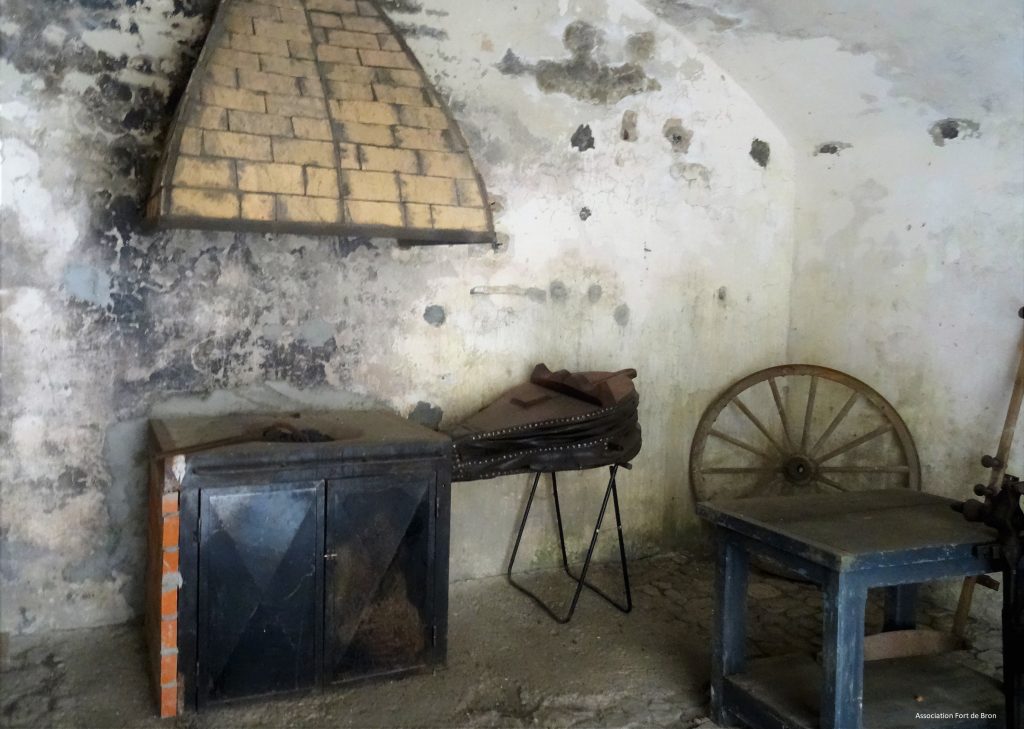
The forge was used for maintenance work on the Fort. The few horses present in the Fort were used for transporting heavy loads. A stable for ten horses was planned in the Fort.
The grand staircase
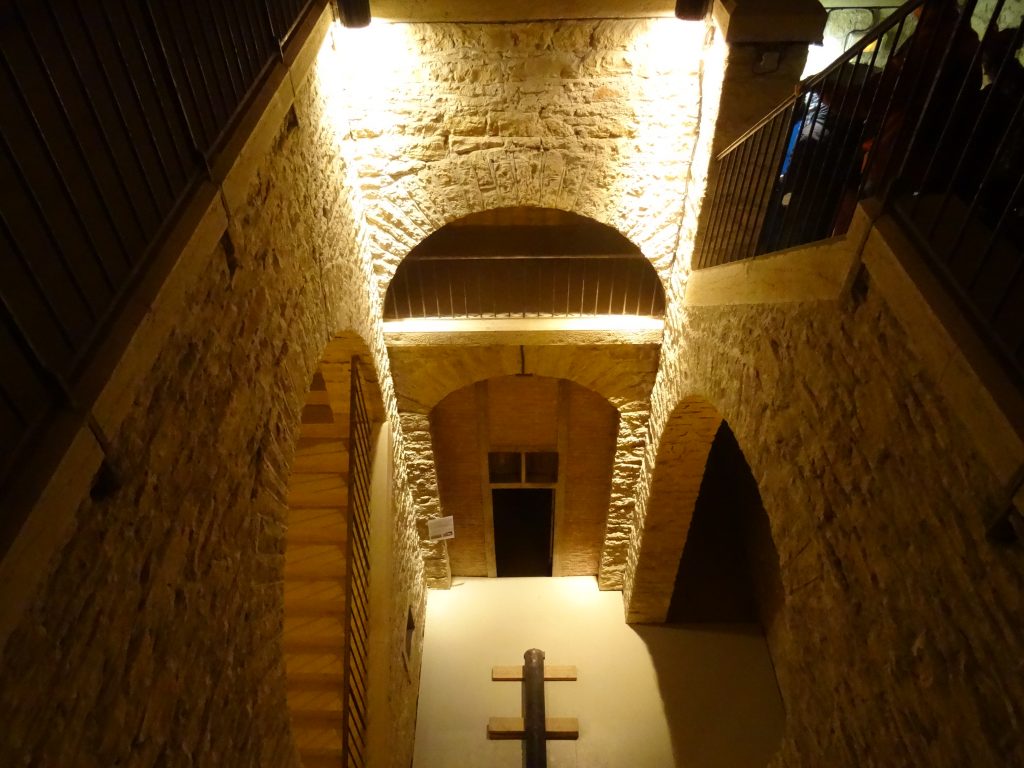
It allowed communication between the various warehouses located in the underground parts of the Fort and the ground surface.
Casemate bunkers
Fort de Bron was organized to receive long-range artillery pieces. The guns producing a large amount of smoke were placed in the open on firing platforms straddled by casemate bunkers.

The gunpowder magazine
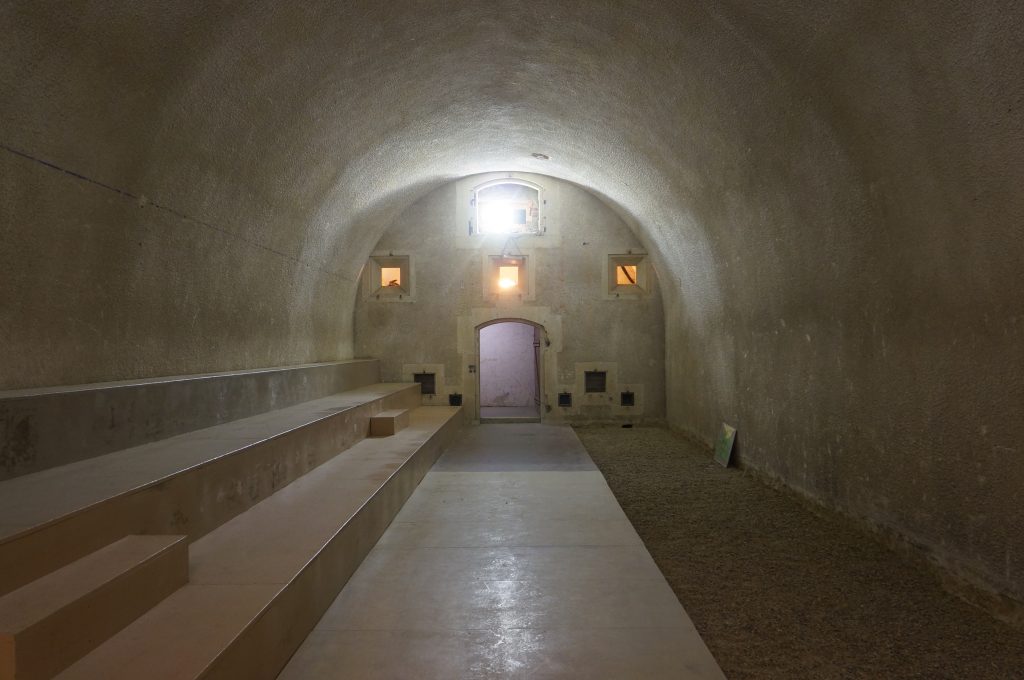
The gunpowder magazine, in a fort, represents the most important but also the most dangerous part of the Fort. It was used to store what was at that time a particularly unstable explosive: « black powder ». It needs to be located far away from the places where soldiers live.
The gunpowder room at Fort de Bron. On the back wall we can see the entrance opening and the bays of the light chamber.
Latrines
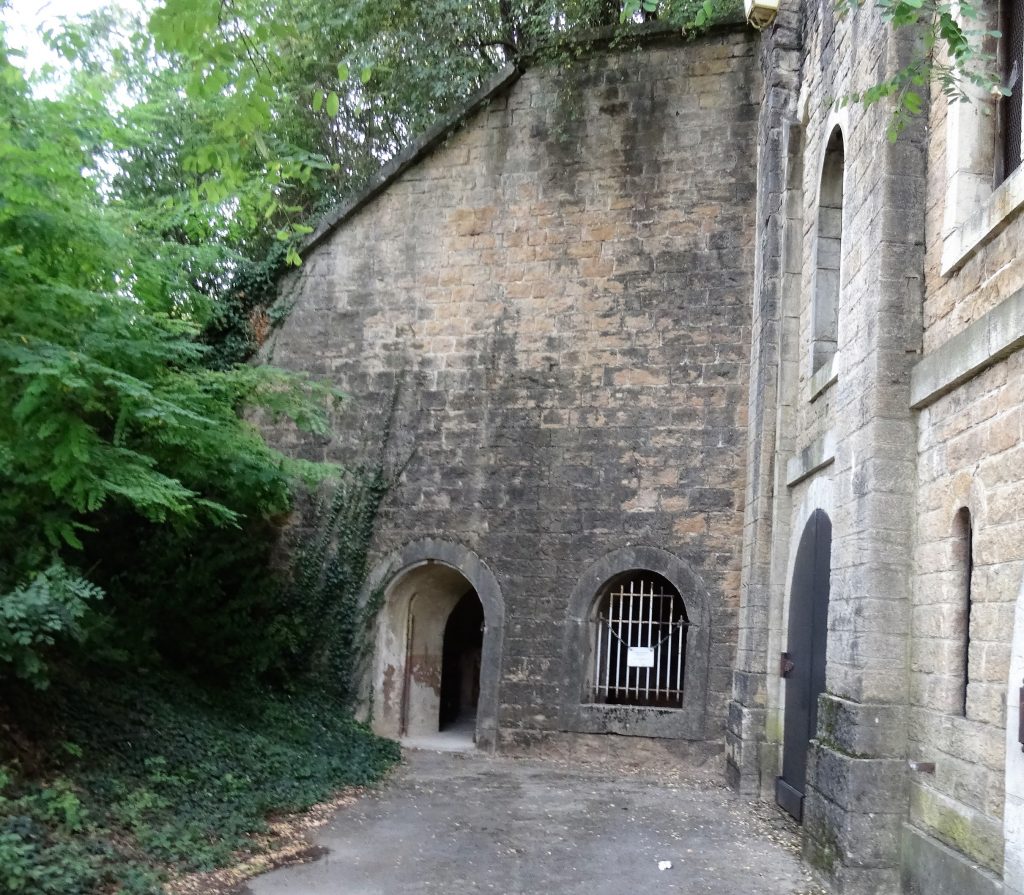
Latrines were located in the extension of the barracks opposite the kitchen. The soldiers could access them from their living quarters by using a staircase and a sheltered corridor in the event of an attack.
